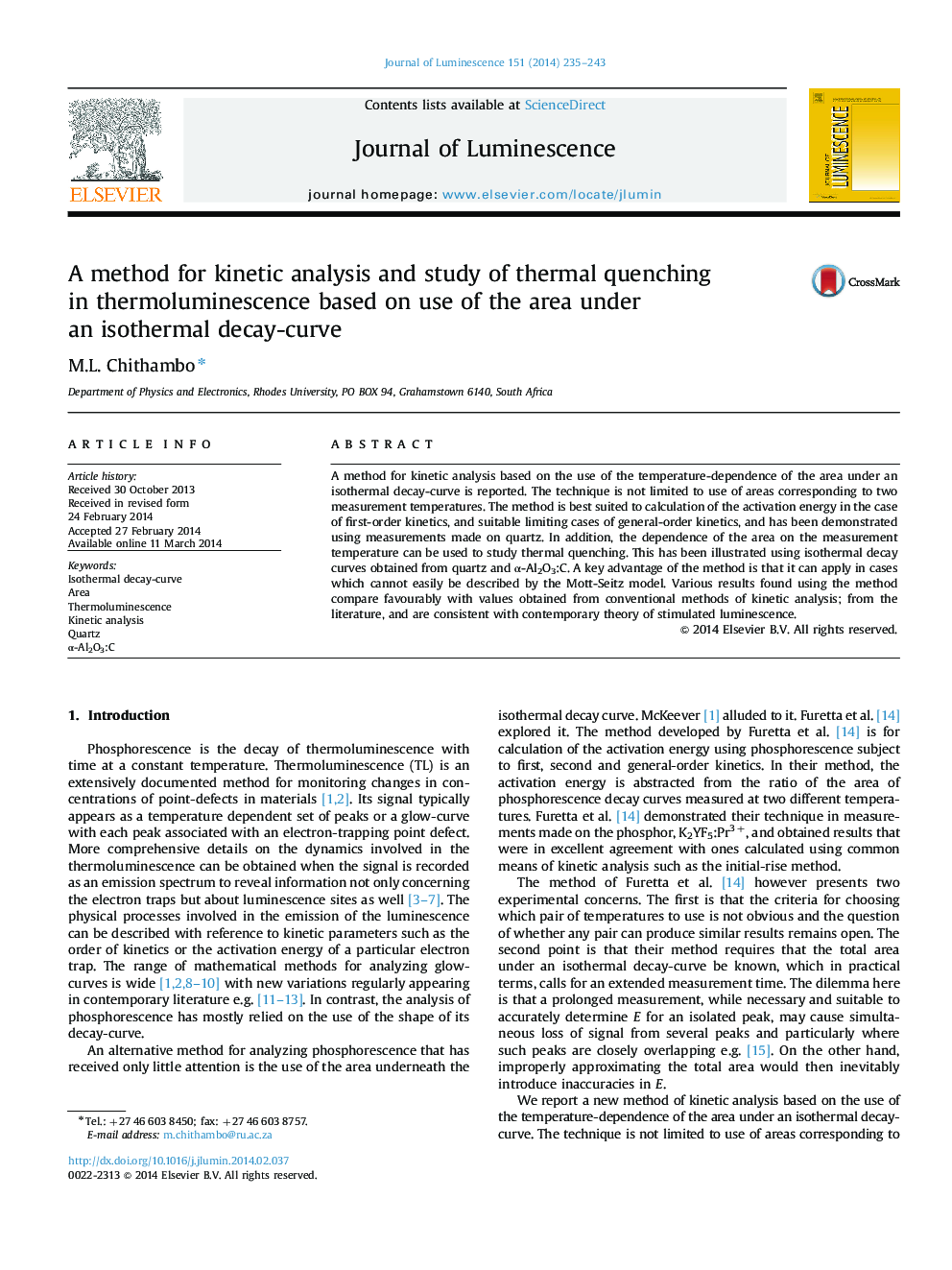| Article ID | Journal | Published Year | Pages | File Type |
|---|---|---|---|---|
| 5399909 | Journal of Luminescence | 2014 | 9 Pages |
Abstract
A method for kinetic analysis based on the use of the temperature-dependence of the area under an isothermal decay-curve is reported. The technique is not limited to use of areas corresponding to two measurement temperatures. The method is best suited to calculation of the activation energy in the case of first-order kinetics, and suitable limiting cases of general-order kinetics, and has been demonstrated using measurements made on quartz. In addition, the dependence of the area on the measurement temperature can be used to study thermal quenching. This has been illustrated using isothermal decay curves obtained from quartz and α-Al2O3:C. A key advantage of the method is that it can apply in cases which cannot easily be described by the Mott-Seitz model. Various results found using the method compare favourably with values obtained from conventional methods of kinetic analysis; from the literature, and are consistent with contemporary theory of stimulated luminescence.
Related Topics
Physical Sciences and Engineering
Chemistry
Physical and Theoretical Chemistry
Authors
M.L. Chithambo,
